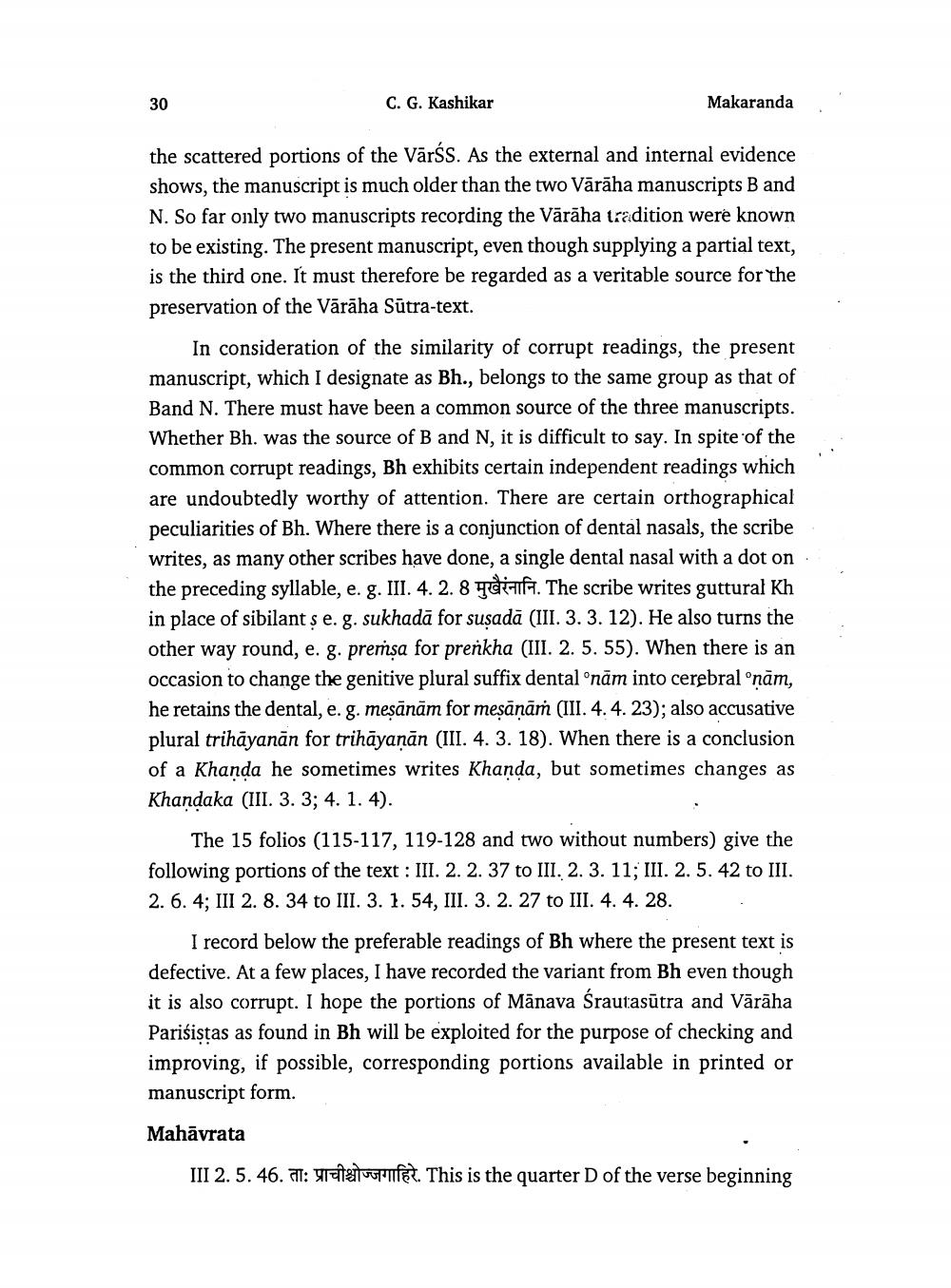________________
30
C. G. Kashikar
Makaranda
the scattered portions of the Vāršs. As the external and internal evidence shows, the manuscript is much older than the two Vārāha manuscripts B and N. So far only two manuscripts recording the Vārāha tradition were known to be existing. The present manuscript, even though supplying a partial text, is the third one. It must therefore be regarded as a veritable source for the preservation of the Vārāha Sūtra-text.
In consideration of the similarity of corrupt readings, the present manuscript, which I designate as Bh., belongs to the same group as that of Band N. There must have been a common source of the three manuscripts. Whether Bh. was the source of B and N, it is difficult to say. In spite of the common corrupt readings, Bh exhibits certain independent readings which are undoubtedly worthy of attention. There are certain orthographical peculiarities of Bh. Where there is a conjunction of dental nasals, the scribe writes, as many other scribes have done, a single dental nasal with a dot on the preceding syllable, e. g. III. 4. 2. 8 Haf. The scribe writes guttural Kh in place of sibilant s e. g. sukhadā for susadā (III. 3. 3. 12). He also turns the other way round, e. g. premsa for prerkha (III. 2. 5. 55). When there is an occasion to change the genitive plural suffix dental onām into cerebral onām, he retains the dental, e. g. mesānām for mesanāṁ (III. 4.4.23); also accusative plural trihāyanān for trihāyanān (III. 4. 3. 18). When there is a conclusion of a Khanda he sometimes writes Khanda, but sometimes changes as Khandaka (III. 3. 3; 4. 1. 4).
The 15 folios (115-117, 119-128 and two without numbers) give the following portions of the text : III. 2. 2. 37 to III. 2. 3. 11; III. 2. 5. 42 to III. 2. 6. 4; III 2. 8. 34 to III. 3. 1. 54, III. 3. 2. 27 to III. 4. 4. 28.
I record below the preferable readings of Bh where the present text is defective. At a few places, I have recorded the variant from Bh even though it is also corrupt. I hope the portions of Mānava Srautasūtra and Vārāha Parisistas as found in Bh will be exploited for the purpose of checking and improving, if possible, corresponding portions available in printed or manuscript form.
Mahāvrata
III 2. 5. 46. a:
itamfet. This is the quarter D of the verse beginning




